
Tinder for HR Developed Only in Six Weeks

The Guys
Wunder Fund scrapes LinkedIn profiles so that HR professionals can select the best candidates for hiring. They came to us, FANS company, looking for an easy-to-use HR tool to handle candidate profiles.
The application was created just by one developer: he talked to a client and did everything himself — from design to backend. Here we share what helped us create such a small-scale launch.
Challenge
Wunder Fund engages in high-frequency trading and generates revenue from small price movements. Algorithms analyze the market, find trading opportunities, and execute tens of thousands of trades per day.
These algorithms are created by high-qualified mathematicians and developers who are called ‘quants’. Wunder Fund, like others in this field, aims to hire the best quants.
Looking for new employees, Wunder Fund scrapes thousands of profiles in LinkedIn. Initially, one of the company’s founders used to manually export candidates with the right parameters from the database and pass Excel sheets to the HR team. Then we were approached to turn the profile database into a convenient working tool.
Solution
Normally, FANS handles large-scale projects, for example, we relaunched the educational platform Synchronize and developed SaaS for logistics management. Such projects are usually handled by a large team that includes managers, software architects, designers, and developers.
Wunder Fund didn't need a big team, just one developer to create an interface. Still, the task seemed interesting to us — so we decided to give it a shot.
It was a FANS developer Arthur Datsenko-Boos who worked on the project. He managed client communication, handled frontend, took care of the design, and implemented changes in backend all by himself. If there was a lack of something, he made decisions on his own and then presented them to the client. As a result, one and a half month later, The Guys — Tinder for HR specialists — was launched.
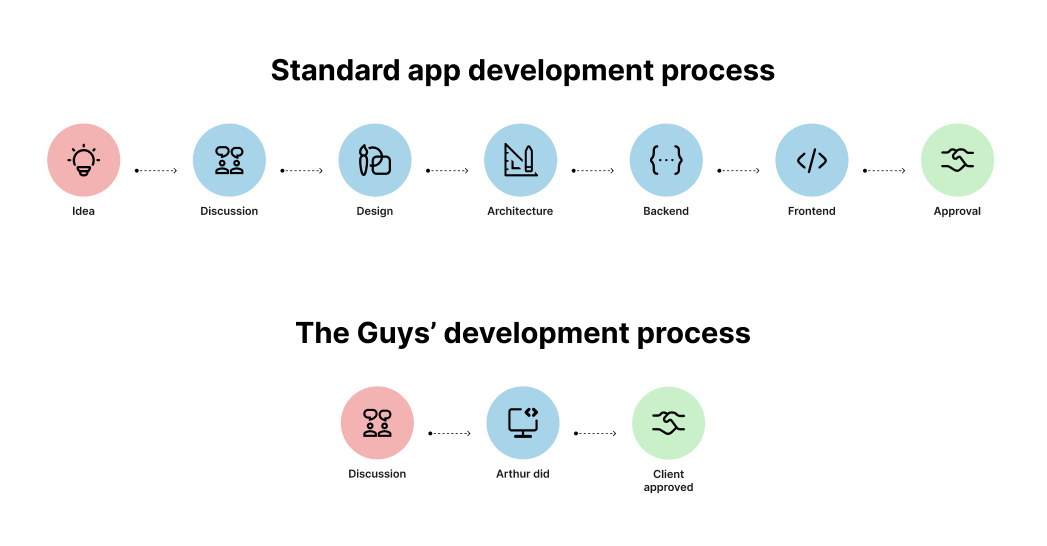
Technology
When the client came to us, backend had already been implemented on Supabase. It’s an open source platform to quickly set up backend using PostgreSQL and other preconfigured tools. As for frontend, Vue.js was chosen for it.
The project uses an unified environment: frontend is deployed on Vercel, while backend uses Supabase’s built-in hosting. This stack makes deployments easy and allows us to get fast feedback from the stakeholder.
The client had a list of features to be implemented, three of them being the key ones.
Filters
Candidate selection based on multiple parameters: from experience to the title of the previous position.
Candidate’s profile
All candidate information is available in two formats: full and short.
Tinder mode
HR professionals can like and dislike candidates, almost as they do on Tinder.
Arthur worked in weekly sprints with a planning and a demo at the beginning of each one. In one and half months the client and the developer had only seven calls. The features were being created in order of importance: main page → candidate’s profile → filters → Tinder mode → other features.
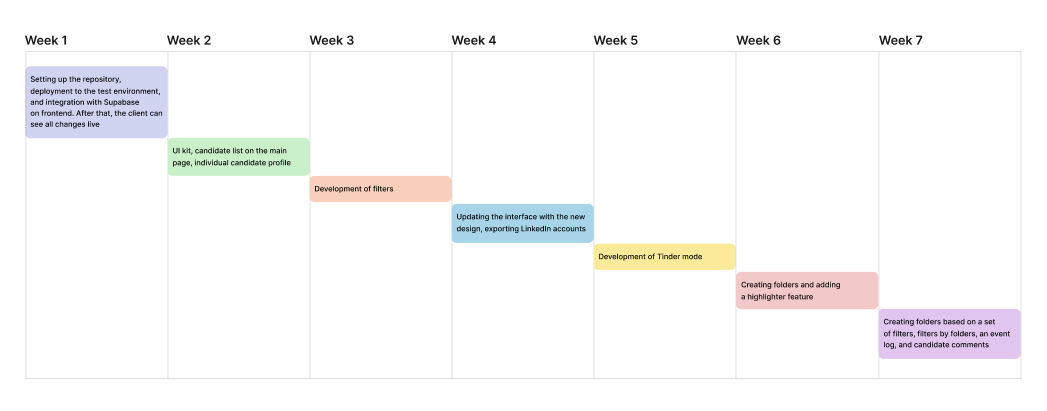
Filters
Wunder Fund wanted to implement complex filters to sort candidates by previous job title, company name, experience, and other characteristics.

FANS developer
"When we were starting to work on filters, I offered the client an approach to implementing it and he answered me using SQL code. It turned out that the client is so technically savvy that he can see the implementation at the code level."
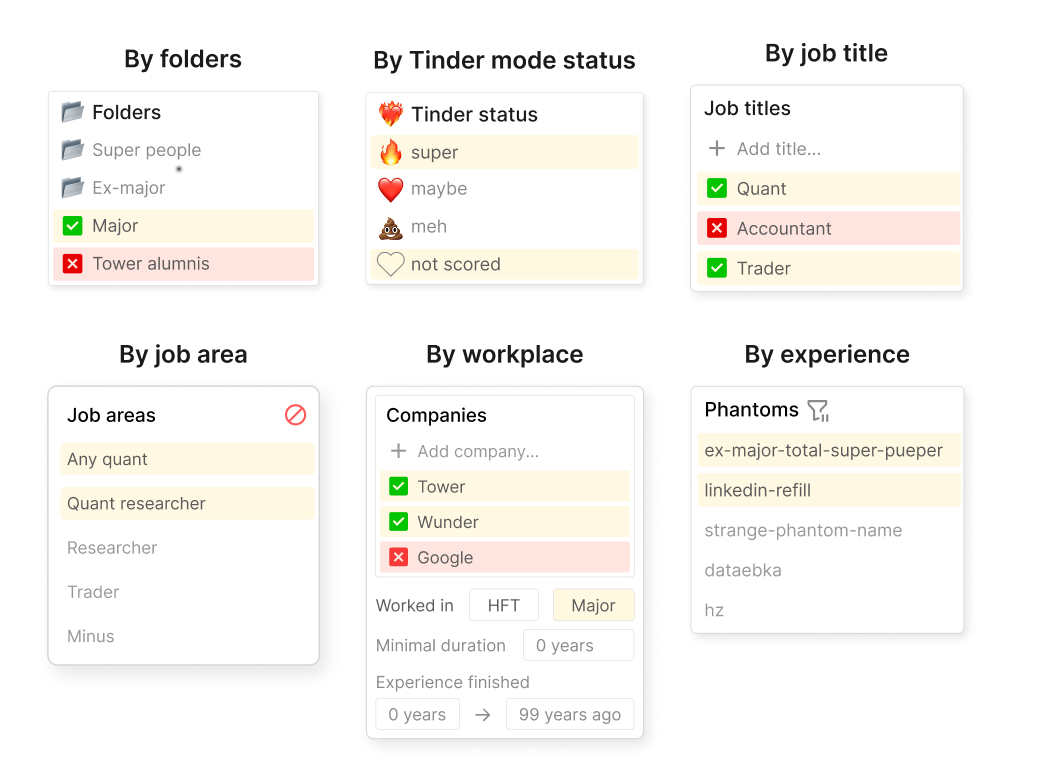
Candidate profile
This feature enables HR professionals to see all information about a candidate in two formats — full and short. The list of other candidates is displayed in the side menu.

Tinder mode
This feature allows HR specialists to estimate quants: they can like, dislike, or give a superlike to them. Developing Tinder mode, Arthur took inspiration from dating apps.
Tinder mode has a log of events, so HR professionals can view peer reviews. The original database didn’t have an event table. Arthur came up with the idea and architecture for it, and implemented the solution after agreeing with the client.
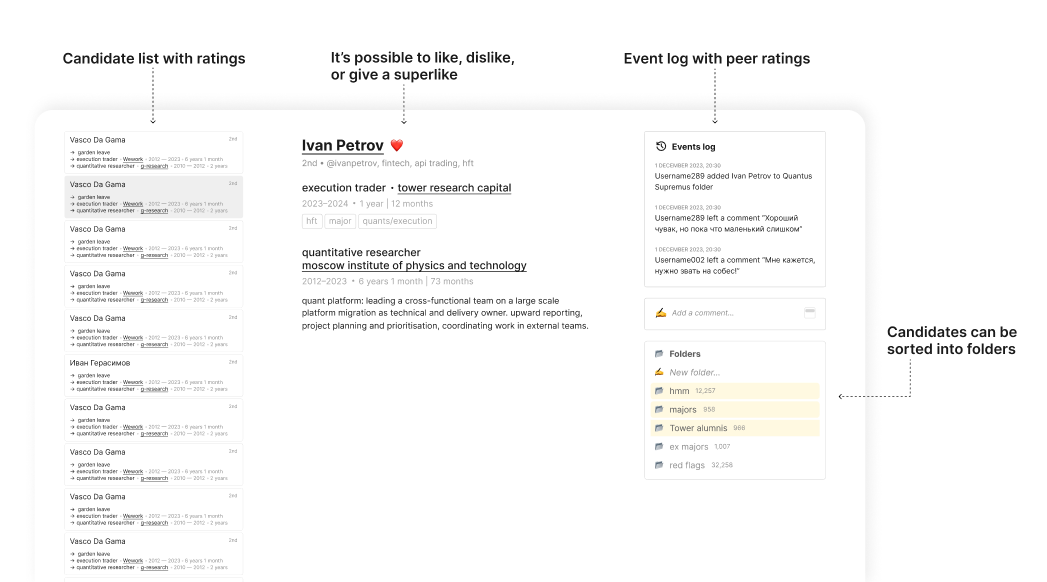
Highlighter
Another feature of the app is a highlighter: it’s a custom-built version of the standard Ctrl/Cmd+F search. The difference from the standard search is the ability to input multiple words and to search only within specific sections, for example, in candidate profiles.
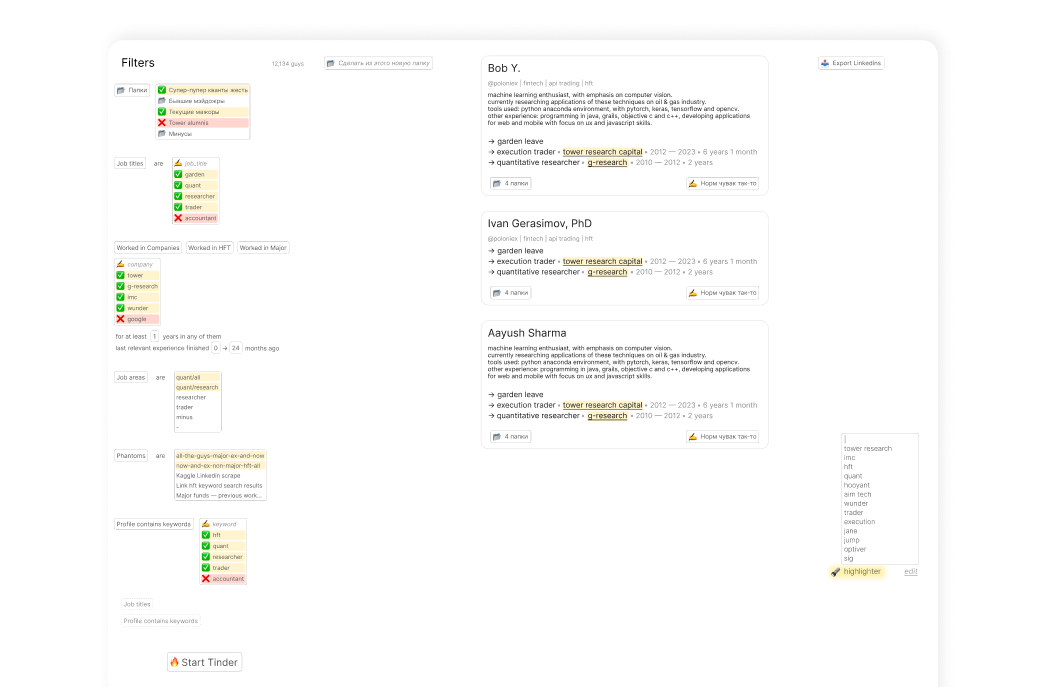
Why It Worked
The process of developing The Guys wasn’t standard. For example, no manager was needed to talk to the client; one developer handled all the tasks independently.
From the very beginning the client had a clear vision of the final result
Not only a rough idea of the project did the client have, but also detailed wireframes. Before the first meeting with the developer, he recorded a 15-minute video, showing all wireframes and explaining how the product should work.
The stakeholder was making all product decisions on his own
In big companies, even the simplest decision usually involves endless discussions and approvals, but here all decisions were made as-needed.
The developer was interested in the product and was not just a doer
Not only was Arthur a full-stack developer, but he also refined the product’s functionality and offered design solutions.
The client and the developer built a true partnership
The stakeholder has technical skills and knows how to handle asynchronous communication. So it was comfortable for him to talk directly to the developer without a manager.
Usually, we handle large-scale projects, but we are also ready to take on smaller tasks because we are glad to bring visible results quickly. Feel free to reach out!
Team
FANS
Samat Galimov
technical director
Artur Datsenko-Boos
developer
Wunder Fund
Georgiy Cheremovskiy
сustomer
Other Projects
Logistics SaaS
Platform
Platform
ERP for managing international freight
Built and rolled out dashboards for logisticians, company execs, and clients, automating and streamlining core operations.

Relaunch of the Chaika Clinic Information System
Designed a medical information system for a premium clinic chain, based on the international FHIR protocol.

Relaunch of the Webium Educational Platform
Created one of the best LMS platforms in the US online education market, handling thousands of teachers and hundreds of thousands of students daily.

